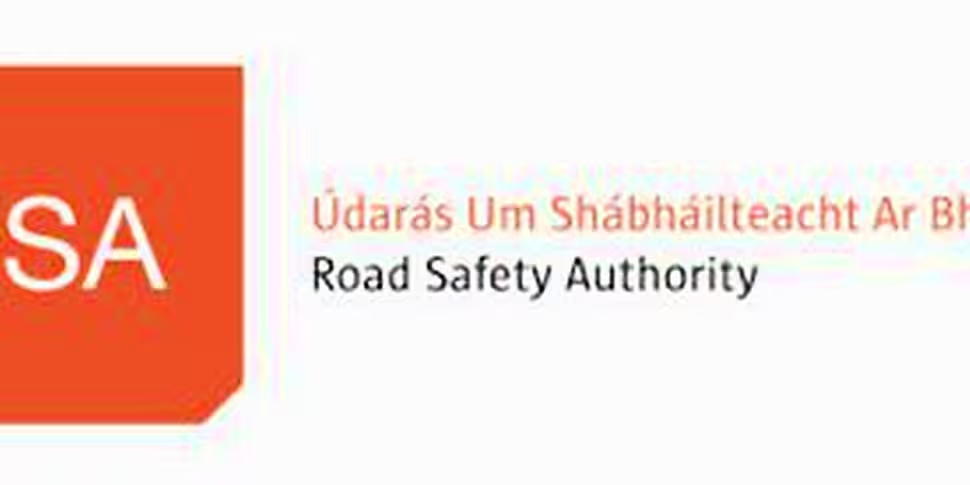Met Eireann has issued a status red warning for Kerry and Cork for southwest winds veering northwest that will reach mean speeds in excess of 80 km/h with gusts in excess of 130 km/h.
Some coastal flooding, especially at high tide and disruption to power and travel are likely.
The RSA is advising road users in areas affected by the red warning to avoid any travel during the storm window.
The warning is in place from Friday the 18th of February at 3am until 8am.
High sided vehicles are particularly vulnerable to strong winds and should avoid travel during the storm window.
An Orange Storm Warning has been issued for Clare, Galway, Waterford, Wexford, Cork, Kerry, Waterford, Tipperary, Kilkenny, Carlow, Wicklow, Laois, Offaly and Dublin for Friday morning from 3am until 11am Friday.
Storm Eunice will track quickly over Ireland tonight and Friday morning bringing severe and damaging winds for a time. Southwest or cyclonic winds becoming northwest will reach mean speeds of 65 to 80 km/h with gusts up to 130 km/h. Some coastal flooding, especially at high tide.
An Orange Snow Warning has been issued for Donegal, Leitrim, Sligo, Mayo, Roscommon from 3am Friday to 3pm Friday. Storm Eunice will bring heavy sleet and snow leading to blizzard-like conditions in parts with treacherous driving conditions.
Those in areas affected by the yellow Weather Warnings are being asked to consider postponing their journey until the storm has passed.
A Yellow Warning is also in place for Ireland from 1am Friday to 3pm Friday afternoon as Storm Eunice will track over Ireland bringing very strong winds and falls of heavy rain, sleet and snow. Some disruption is likely along with a possibility of coastal and spot flooding.
Nationally, all road users are being advised to be aware of the dangers once the storm has passed. When the extreme weather passes road users will still have to contend with potentially hazardous road conditions such as flooded roads and downed pylons, lines, trees, branches, and other debris which could block roads. Obey any road closures or diversions put in place by Local Authorities and An Garda Síochána.
The following advice is being given to road users. Motorists;
- Control of a vehicle may be affected by strong cross winds, especially on exposed routes such as dual carriageways and motorways. High sided vehicles and motorcyclists are particularly vulnerable to strong winds.
- Beware of objects being blown onto the road. Expect road conditions to change quickly in high winds so reduce your speed.
- Watch out for falling/fallen debris on the road and vehicles veering across the road.
- Drivers should allow extra space between themselves and vulnerable road users, such as cyclists and motorcyclists as they may be blown off course by strong winds.
- Drivers need to slow down in wet weather conditions, to avoid the risk of aquaplaning. Drivers should also leave a bigger gap between themselves and the vehicle in front.
- If the road ahead is flooded choose another route, do not attempt to drive through it. Flooded roads that appear shallow could be deeper than you think. They may also have trees or branches that have fallen that may not be visible.
- Road users should always follow recommended routes and obey signs closing roads to traffic.
- After going through water, drive slowly with your foot on the brake pedal for a short distance - this helps to dry the brakes.
- Drive with dipped headlights at all times.
Advice to Pedestrians, Cyclists and motorcyclists;
- In areas affected by Orange Weather Warnings you should consider postponing your journey until conditions improve.
- Visibility and light is reduced in poor weather conditions. Keep safe by making sure you can be seen. Wear bright clothing with reflective armbands or a reflective belt.
- Take extra care when crossing the road or cycling in extremely windy conditions as a sudden gust of wind could blow you into the path of an oncoming vehicle.
- Walk on a footpath, where possible and not in the street. If there is a footpath and it is safe to use, look out for falling debris from above, especially in urban areas.
- Walk on the right-hand side of the road, facing traffic if there are no footpaths.
- Cyclist should ensure that they and their bike are visible to other road users by investing in a good set of front and rear lights (white at the front, red at the back) and by wearing clothes that help you be seen on your bike such as bright and light reflective items.
The RSA has the following practical advice for road users to cope with snow conditions:
Drivers are advised to:
- Remove all snow from your vehicle before commencing your journey. Snow left on the roof will become loose and can drop onto the windscreen during braking, thereby causing sudden and severe restriction to your vision. It can also fall off during your drive and cause injury to pedestrians or a reflex action by another driver.
- Clear windows and mirrors before you set out, use a screen scraper and de-icer. Do not use hot water on the windscreen as it can crack the glass.
- In snow and icy conditions slow down, use all controls delicately and leave extra distance between you and the vehicle in front. Avoid over steering and harsh braking and harsh acceleration. Use the highest gear possible to avoid wheel spin. Select a low gear when travelling downhill especially if through bends.
- In blizzard conditions, visibility will be reduced greatly. Do not drive on the tail-lights of the vehicle in front (Target Fixing). This can give a false sense of security and you will be too close to be able to brake safely. In heavy snow, use your fog lights, turn off your radio and open your window a fraction, so you can hear other traffic, especially at junctions.
- Use dipped headlights at all times, and fog lights in heavy snow to ensure you are seen by other motorists (but don’t forget to turn them off afterwards).
- Watch out for vulnerable road users such as pedestrians, cyclists and motorcyclists and allow extra space.
- Drivers of high sided vehicles like trucks and buses are particularly at risk from both the dangers posed by snow but also from the high winds associated with blizzard conditions.
Pedestrians are advised in snow and Icy conditions to:
- Wear high visibility clothing or carry a torch as visibility is reduced in snowy conditions. Wear clothing that does not restrict your vision.
· Wear appropriate footwear. Walk on the footpath, not in the street. Walk on the right hand side of the road, facing traffic if there are no footpaths.
· DO NOT underestimate the danger of ice. Many slips and falls happen in places people regard as safe and secure, typically outside their front door, on the door step, on the path or while getting out of the car. When you approach a footpath or roadway that appears to be covered with snow or ice, always use extreme caution.
Cyclists and Motorcyclists are advised:
· Motorcyclists / Cyclists should not compromise their safety by their ‘need’ to travel in icy/snow conditions.
· Visibility is reduced in snowy conditions so cyclists should wear a Sam Browne Bandoleer belt or high visibility vest and ensure the lights on your bike are working correctly.
· Motorcyclists should avoid wearing a dark visor in any bad light conditions.
· Remember other road users may not ‘expect’ you and could therefore comprise your safety











